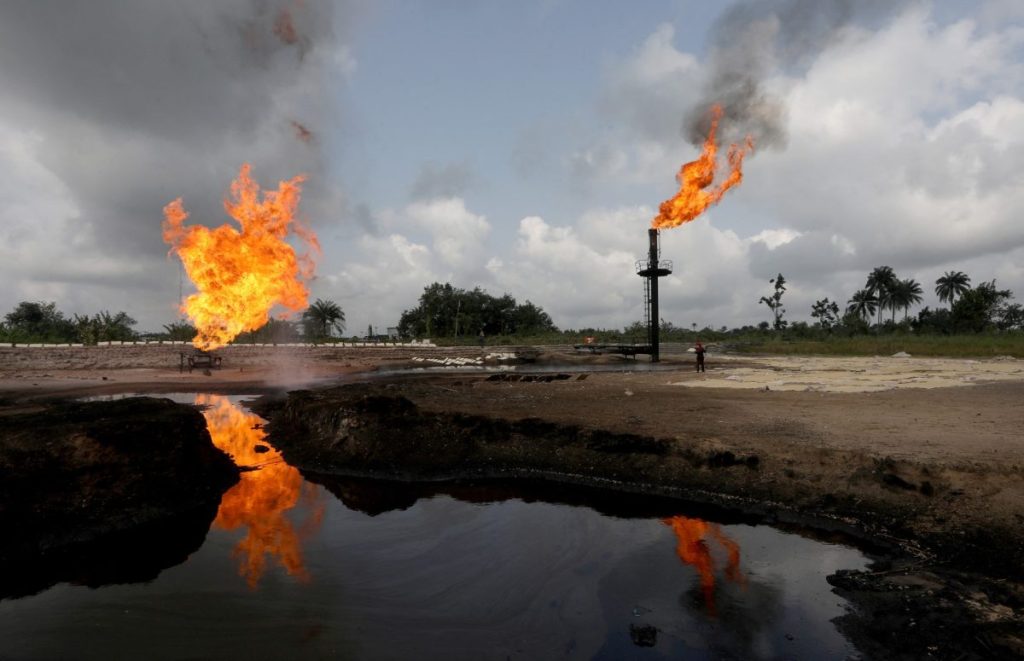
Oghenekevwe S Ovbije
Lagos — Nigeria flares over 7 billion cubic feet of gas annually enough to generate thousands of megawatts of power or fuel hundreds of industrial sites. This is not a resource problem but an infrastructure and monetization problem.
While the country pursues large-scale gas pipelines and LNG exports, it is overlooking smaller, decentralized options that could immediately transform energy access for Nigeria’s manufacturing base.
Stranded gas and flare sites, long dismissed as operational nuisances, represent real economic value if treated as feedstock for decentralized power. With modular technology, the right partnerships, and focused policy support, small-scale gas monetization could become a key engine for energy security and industrial growth not years from now, but now.
Large Ambitions, Poor Connectivity
Nigeria holds over 200 trillion cubic feet of proven gas reserves, yet a substantial portion remains undeveloped or flared due to infrastructure gaps. Most flare sites are located in the Niger Delta and are distant from demand centers in the Middle Belt and North.
The Ajaokuta–Kaduna–Kano (AKK) pipeline and other large midstream projects are years behind schedule, while industries in places like Aba, Sango-Otta, and Kaduna remain tethered to diesel. National electrification and industrialization goals are constrained by a single fact: gas cannot move fast enough. It’s time to adopt an innovative approach that brings processing closer to production and consumption closer to communities.
Modular Solutions for Distributed Demand
Recent advances in modular gas-to-power (GTP), mini-LNG, and compressed natural gas (CNG) technologies have lowered the threshold for viable gas utilization. Today, it is technically and commercially feasible to convert as little as 0.5 to 10 million standard cubic feet per day (mmscfd) of flare gas into usable energy.
These solutions can be deployed near wellheads and tailored to local demand. Microturbines, hybrid generators, and mobile separation units require smaller footprints, fewer approvals, and shorter construction cycles compared to traditional gas infrastructure.
With proper integration, flare sites can power local industries, embedded generation networks, or CNG truck-out models all without waiting for grid or pipeline extensions.
Industrial Clusters as Natural Offtakers
Nigeria has dozens of small to mid-sized industrial clusters operating below capacity due to unstable power. Areas like Nnewi, Ilupeju, and Kano host manufacturers eager to switch from diesel to cheaper, cleaner gas if it were available. By co-locating small-scale GTP or CNG systems near flare zones, Nigeria can anchor demand directly within industrial corridors.
These offtake zones need long-term contracts, guaranteed delivery, and consistent pricing conditions that modular systems are uniquely positioned to meet. They also allow industries to plan production with greater reliability, improving competitiveness and local job creation.
The Engineering and Commercial Interface
From an engineering standpoint, flare gas conversion projects require a process. Gas must first be conditioned to remove impurities such as hydrogen sulfide and carbon dioxide, which can corrode pipelines and equipment.
It must then be compressed and stabilized to the right pressure levels suitable for downstream use. This is followed by conversion either into electricity using microturbines or into compressed gas through CNG skids. Finally, the systems must be equipped with safety controls for overpressure, shutdown, and ignition risk.
Commercially, these projects require clearly defined offtake agreements, cost-recovery frameworks, and site access rights. Collaboration between upstream operators, modular technology providers, and energy service companies (ESCOs) will be essential. Viable models may include lease-to-own arrangements, shared infrastructure partnerships, or fixed-price power purchase agreements linked to manufacturing output.
Policy Bottlenecks Still Remain
Despite progress through the Flare Gas (Prevention of Waste and Pollution) Regulations and the Nigerian Gas Flare Commercialization Programme (NGFCP), execution delays and inconsistent permitting remain common. Developers cite unclear access terms, slow processing timelines, and the lack of enforceable flare capture agreements. To accelerate adoption, the government should implement recommended changes.
It must fast-track licensing and approvals for modular flare gas utilization projects. Fiscal incentives, such as tax waivers or accelerated depreciation schedules for capital equipment, should be provided to early developers. Mandatory flare data reporting by operators would also improve transparency, helping investors evaluate projects more accurately. Additionally, the establishment of localized gas dispatch zones tied to industrial policy would ensure better project alignment and strategic clustering.
Environmental and Economic Impact
Utilizing flare gas for small-scale industrial energy serves both climate and development goals. Flaring contributes significantly to Nigeria’s greenhouse gas emissions profile. Turning this gas into power displaces diesel use by reducing carbon emissions, lowering operating costs, and improving public health.
Economically, decentralized gas access reduces production downtime, enhances local value addition, and creates supply chain resilience. One 10 mmscfd flare site converted to CNG or power could support over 20 MW of distributed electricity or fuel dozens of manufacturing lines. Unlike centralized infrastructure, these solutions scale horizontally each project creating its own value chain without waiting for national grid expansion.
The Future Is Local
Nigeria’s gas vision cannot depend solely on mega-pipelines and export terminals. It must also embrace a parallel strategy of local capture, conversion, and consumption. Each flare site is a ready-made energy node. Each industrial hub is a waiting market.
The missing link is delivery. By investing in modular systems and enabling private sector collaboration, Nigeria can close this gap. Turning flaring into fueling is not just technical innovation, it’s a national development imperative.
This article was originally posted at sweetcrudereports.com
Be the first to comment